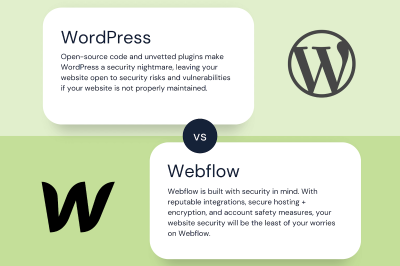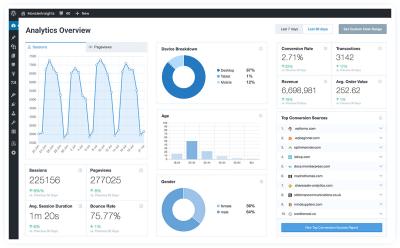Creating a website today is easier than ever thanks to Content Management Systems (CMS). These platforms simplify the process of building, managing, and updating your site without needing to code from scratch. WordPress is by far the most popular CMS, powering over 40% of websites worldwide. However, it’s not the only option out there. Whether you’re seeking more flexibility, better security, or specific features, exploring other CMS platforms can help you find the perfect fit for your needs. In this post, we’ll dive into what CMSs are all about and highlight some top alternatives to WordPress so you can make an informed decision for your website journey.
Popular WordPress Alternatives for Building Your Website

If you’re considering stepping away from WordPress or just exploring other options, you’re in luck! There are several excellent CMS platforms that cater to different needs, budgets, and technical skills. Here’s a quick look at some of the most popular WordPress alternatives:
- Wix: Perfect for beginners, Wix offers a user-friendly drag-and-drop website builder with beautiful templates and lots of customization options. It’s an all-in-one solution with hosting included, making it easy to get started quickly.
- Squarespace: Known for stunning design templates, Squarespace is ideal for creatives, small businesses, and portfolios. Its intuitive interface makes building a visually appealing site straightforward, even if you’re not tech-savvy.
- Shopify: If you’re looking to create an e-commerce website, Shopify is a top choice. It provides everything you need to sell products online, from inventory management to secure payment processing.
- Joomla: For those who want more flexibility and advanced features without diving into complex coding, Joomla offers a powerful platform with extensive extensions and customization options.
- Drupal: Aimed at developers and organizations needing complex, highly customized sites, Drupal offers robust security and scalability. It has a steeper learning curve but is incredibly powerful for large projects.
- Ghost: Focused on blogging and content publishing, Ghost provides a clean, minimalist interface with fast performance. It’s great for writers and online publications looking for a simple yet effective platform.
Each of these platforms has its own strengths, so your choice depends on your specific needs—whether it’s ease of use, design flexibility, e-commerce capabilities, or advanced customization. Exploring these options can help you find the perfect CMS to bring your website vision to life without feeling limited by WordPress or overwhelmed by complexity.
3. Comparing Features and Benefits of Different CMS Platforms
When you’re on the hunt for the perfect CMS, it’s essential to understand what each platform brings to the table. Different CMS options excel in various areas, so let’s break down some of the most popular choices and see how they compare in terms of features and benefits.
WordPress is the most widely used CMS in the world, powering over 40% of websites. It’s incredibly user-friendly, especially for beginners, thanks to its intuitive interface and vast library of plugins and themes. Whether you want a simple blog or a complex e-commerce site, WordPress can handle it all. Its open-source nature means a vibrant community constantly developing new tools and support.
Joomla! strikes a balance between ease of use and flexibility. It’s great for community portals, memberships, and social networks. Joomla’s built-in access control levels and multilingual support out of the box make it a solid choice if your website needs to cater to diverse audiences. However, it might have a slightly steeper learning curve compared to WordPress.
Drupal is known for its scalability and security. It’s favored by large enterprises, government agencies, and sites that require complex data organization. Drupal offers advanced customization options and robust content management features. But, it’s not as beginner-friendly, often requiring some technical knowledge to make the most of its capabilities.
Squarespace and Wix are popular hosted platforms that are ideal for small business owners and individuals who want a beautiful website without fussing over technical details. They come with stunning templates and drag-and-drop builders, making website creation quick and straightforward. However, they can be limited in terms of customization and scalability compared to open-source platforms.
| Platform | Best For | Ease of Use | Customization | Cost |
|---|---|---|---|---|
| WordPress | Blogs, e-commerce, small to large sites | Easy for beginners | Extensive via plugins/themes | Free, with paid options |
| Joomla! | Community sites, memberships | Moderate | Moderate | Free |
| Drupal | Large, complex sites, enterprise | Advanced | Highly customizable | Free |
| Squarespace/Wix | Portfolios, small business | Very easy | Limited but intuitive | Subscription-based |
Each platform shines in different scenarios. WordPress’s flexibility makes it a go-to for many, but if your project demands complex data handling or enterprise security, Drupal might be better. For quick, beautifully designed sites with minimal fuss, Squarespace and Wix are excellent options. Think about your specific needs, technical comfort level, and future growth plans when comparing these options.
4. Factors to Consider When Choosing a CMS for Your Website
Picking the right CMS isn’t just about the features—it’s about finding the platform that fits your unique needs and goals. Here are some key factors to keep in mind to make an informed decision:
- Ease of Use: How comfortable are you with technical tasks? If you’re a beginner, platforms like WordPress, Squarespace, or Wix might be your best bet, thanks to their user-friendly interfaces. More advanced users might prefer Drupal for its customization capabilities.
- Scalability: Will your website grow over time? If you plan to expand, choose a platform that can handle increased traffic and content. WordPress and Drupal are known for their scalability, while hosted solutions may have limitations.
- Customization and Flexibility: Do you want complete control over your site’s design and functionality? Open-source platforms like WordPress, Joomla!, and Drupal offer thousands of plugins, themes, and custom code options. Hosted solutions might be more limited but easier to manage.
- Security: Especially important for e-commerce or membership sites. Platforms like Drupal emphasize security, making them suitable for sensitive data. Regular updates, backups, and security plugins are also crucial regardless of the platform.
- Cost: Consider your budget. Open-source CMSs are typically free but might incur costs for hosting, premium themes, or plugins. Hosted solutions like Squarespace and Wix charge monthly fees, which include hosting and support.
- Support and Community: A vibrant community can be a lifesaver when troubleshooting. WordPress, for example, has extensive forums, tutorials, and third-party support. Check if your chosen platform offers reliable customer support if you prefer professional assistance.
- SEO Capabilities: Search engine optimization is vital for visibility. Most modern CMS platforms come with SEO-friendly features, but some, like WordPress, have dedicated plugins to help optimize your content.
- Integration with Other Tools: Will you need e-commerce, email marketing, or analytics tools? Ensure your CMS can seamlessly integrate with the services you plan to use.
In the end, the best CMS for you depends on your specific needs, technical skills, and long-term goals. Take the time to evaluate these factors carefully. Sometimes, trying out a few platforms with demo sites or quick trials can give you a clearer idea of what feels right. Remember, a good CMS should empower you to create and manage your website confidently without unnecessary complexity.
5. How to Migrate Your Website from WordPress to a Different CMS
Thinking about switching from WordPress to another CMS? It might seem daunting at first, but with a clear plan, you can make the transition smoothly and without losing your valuable content or visitors. Here’s a simple guide to help you through the process.
Step 1: Choose the Right CMS
Before you start the migration, make sure you’ve selected the platform that best fits your needs—whether it’s Drupal, Joomla, Squarespace, or a headless CMS like Contentful. Consider factors like ease of use, scalability, customization options, and community support.
Step 2: Backup Your WordPress Site
Always start with a full backup of your website. Use plugins like UpdraftPlus or BackupBuddy to save your database and files. This way, if anything goes wrong, you can restore your site to its previous state.
Step 3: Export Your Content
Most CMS platforms offer tools to export your content. For WordPress, you can use the built-in export tool found under Tools > Export. This creates an XML file containing your posts, pages, and other content. Keep this file handy for import into your new platform.
Step 4: Set Up Your New CMS
Install and configure your new CMS on your hosting environment. Customize the design, themes, and plugins to match or improve upon your previous site’s look and functionality.
Step 5: Import Your Content
Use the import tools provided by your new CMS to bring in your exported content. Some platforms might require additional plugins or manual adjustments to ensure everything appears correctly. Be prepared to do some cleanup—like fixing image links or formatting issues.
Step 6: Redirect URLs and SEO Settings
To maintain your search engine rankings, set up 301 redirects from your old WordPress URLs to your new site URLs. Use plugins or server configurations to handle this seamlessly. Also, update your sitemap and inform search engines about the change through Google Search Console or Bing Webmaster Tools.
Step 7: Test Everything
Before going live, thoroughly test your new website. Check all pages, links, images, forms, and functionalities. Make sure your site loads correctly on different devices and browsers.
Step 8: Launch and Monitor
Once satisfied, make your new site live. Monitor traffic, rankings, and user feedback closely during the first few weeks to catch and resolve any issues quickly.
6. Conclusion and Recommendations for Selecting the Best CMS for Your Needs
Choosing the right Content Management System isn’t a one-size-fits-all decision. It depends on your unique goals, technical skills, budget, and the type of website you want to create. Here’s a quick rundown to help you decide:
- WordPress: Perfect for bloggers, small businesses, and those wanting extensive customization with plugins and themes. Easy to use, but can become complex as your site grows.
- Joomla: Great for social networks and e-commerce sites. Offers a good balance of flexibility and ease of use.
- Drupal: Ideal for complex, enterprise-level websites requiring advanced security and custom features. Has a steeper learning curve.
- Squarespace/Wix: Excellent for beginners who want attractive designs with minimal effort. Limited customization compared to open-source options.
- Headless CMS (like Contentful or Strapi): Best if you want to deliver content across multiple platforms or want more control over the front-end development.
Remember, the best CMS for you is one that aligns with your technical comfort level, growth plans, and the features you need. Take the time to explore demos, read reviews, and consider your long-term goals. When in doubt, consult with web development professionals—they can help you make an informed decision and ensure a smooth transition if you’re migrating from WordPress or another platform.
Ultimately, the right CMS empowers you to create a website that’s not only beautiful and functional but also scalable and easy to maintain. Happy building!


